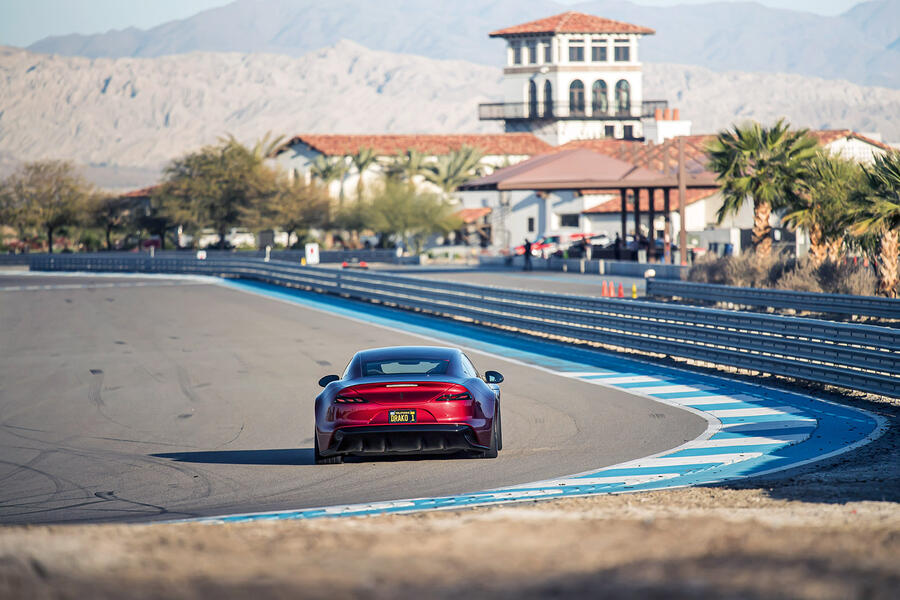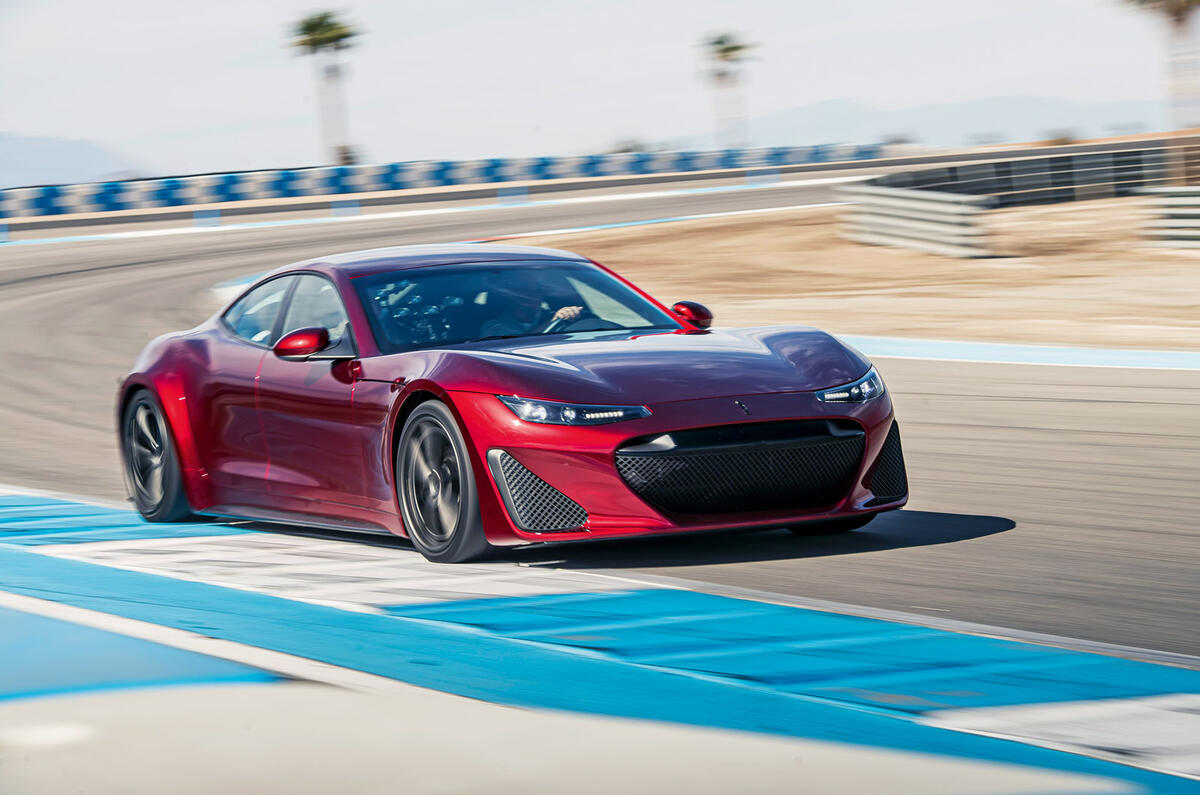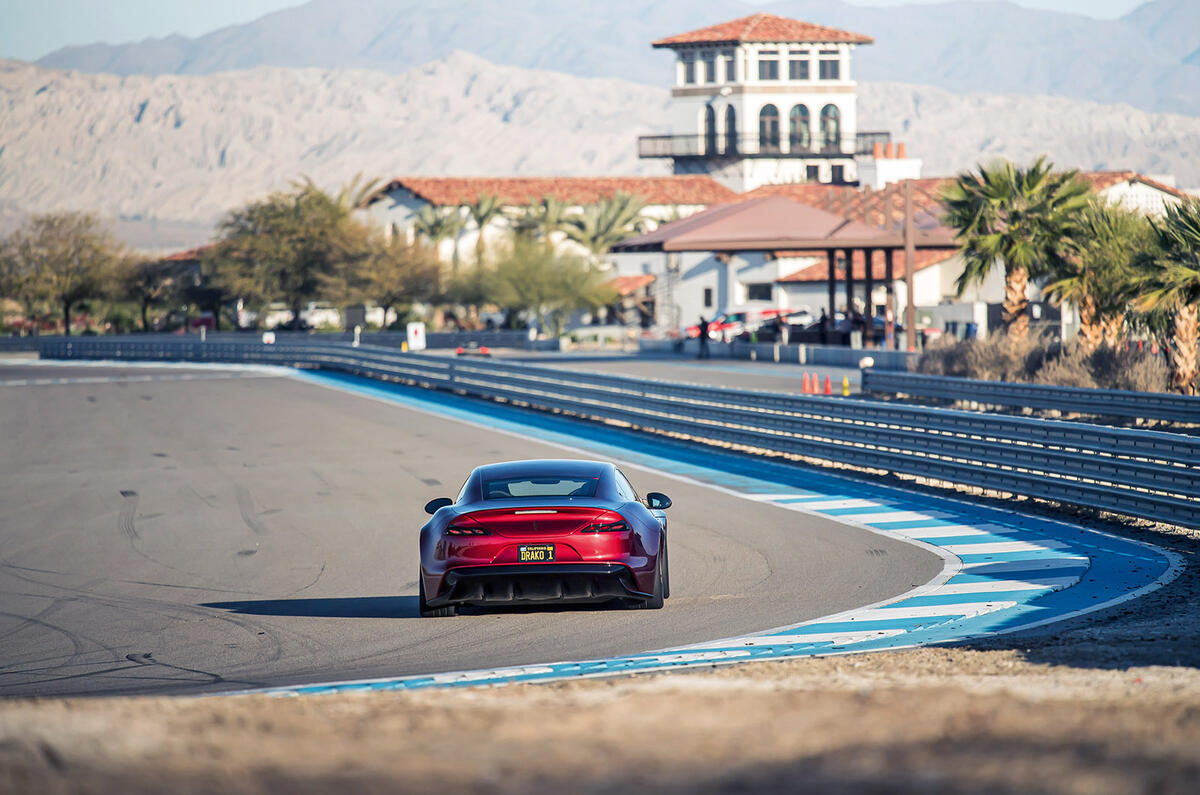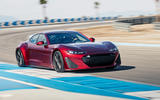Well I never, if it isn’t Valentino Balboni, the legendary Lamborghini test driver. He’s possibly the last person I’d have expected to bump into at the launch of an electric hypercar. The car in question is called the Drako GTE and the place is Thermal Raceway in California.
I wasn’t expecting to be here myself, but I’m staying with a photographer pal who’s shooting the car for the journalists and other media at the event. We recently ran a feature on Thermal and I was curious to see it for myself.
It’s great to see Balboni here. He was always the coolest of the Italian test drivers. Ferrari’s Dario Benuzzi is a pretty slick dude but also a rather more polished act than Balboni – a bit more designer shades. When you got in a Lamborghini with Balboni, you felt that you were in the car with a proper mechanic and craftsman. He would roll up his sleeves and get stuck in. Boy did he get stuck in.
This GTE is a bit of a thing. It was born in Silicon Valley, the project of electroboffins Dean Drako and Shiv Sikand. Drako isn’t here today, but the quick-talking, very passionate and clearly intelligent Sikand is. The car itself is powered by four electric motors, making it, he points out, the only quad-motor EV that exists in the metal (well, if you ignore Mercedes-Benz’s late SLS AMG Electric Drive).

As you might have already guessed from looking at the photos, the Drako is based on the Fisker Karma. The doors are the same but the rest of the carbonfibre body has been tweaked by ex-Pininfarina designer Lowie Vermeersch. It isn’t ugly, but it does have a visibly enormous wheelbase. A 90kWh battery pack containing 10,000 cells sits under the floor, which explains why. The four motors drive the wheels via half-shafts and produce a combined total of 1200bhp.
Balboni is being interviewed on camera. This should be interesting. What does he think about high-performance EVs? “They’re the future, for sure,” he says. “The days of the traditional supercar are coming to an end.” He’s right, of course, as the plethora of super-EVs in development shows. I suspect also that Balboni, a guest here today, is being somewhat diplomatic, so I’ll get him alone later.
‘Alone’ is sitting next to him in the Drako. The last time I met Balboni, I was driving a slightly scuffed Diablo SV into the car park at Sant’Agata. It had been teeming with rain and I had been unable to make a mountain road corner in the non-ABS-equipped and summer-tyred Lamborghini.
“Ah, yes,” says Balboni. “A blue one with orange SV lettering on its side.” He remembers. He was fine about it at the time; he just wanted people to drive his cars with gusto and passion and expected the odd bit of collateral.
Balboni answered the questions in a matter-of-fact way, just as I would have done. Yes, EVs are the future, but don’t expect me to weep with joy at the prospect. The real Balboni comes out when I talk about the old days and his first love, the Miura, and mention that I had lunch with his old gaffer, Gian Paolo Dallara, last year.

We’re in a different world now. Last time I was his passenger, there was a loud V12 behind us and he was about to pull out of the factory gates and into the Emilian countryside with his foot flat to the floor. In the Drako, there are just odd whirring noises and the whining of cooling pumps.
Different environment, same old rolled-up sleeves, same talent. Balboni hammers the Drako around Thermal’s multiple corners with the accompaniment of more whirrings and a lot of tyre squeal. This car weighs 2.5 tonnes, and you can feel that even from the passenger seat.
The Lamborghinis that Balboni developed weren’t exactly light or easy to drive fast, so this is no great challenge for Il Maestro. There’s plenty of time to catch up and talk joyfully of old times, because the Drako has to spend quite a lot of time suckling from a large and very noisy diesel generator. Drive super-EVs on track and you get a lot of coffee time.
“We lived through a golden age of the sports car,” says Balboni, becoming more wistful by the moment, “with a freedom to drive and enjoy cars that no longer exists.”
Indeed: a period in which an Italian policeman would have been put on parking meter patrol if he had been stupid enough to give Balboni a speeding ticket in a Countach.
Riding shotgun in the Drako GTE
Shiv Sikand explained at length the advantages of having four electric motors and how an enormous amount of work has gone into the electronic control and software that vectors torque between them, front to back and laterally. Total control.
When you’re out on the track, you feel that all this electrickery is employed in keeping the Drako on the asphalt, controlling its weight and enabling the Michelin Sport Cup 2 tyres to last more than a couple of laps. The brakes are huge ceramic discs, which do the job, but they’re just one part of the system: it’s telling that the Drako has to have its brakes bled halfway through the event.

The Nissan GT-R (which is a bit too technical for my taste) uses its demonically clever systems to enhance the experience: you can feel the torque moving around the car and helping you to drive it faster. Apart from on one occasion when I felt the Drako launch itself out of a corner with a wriggle, there’s no emotion to the experience of going fast in this car.
The $1.25 million (£1m) Drako won’t be homologated for sale in Europe, so all 25 examples to be built will be for American or Middle Eastern customers. While the car is a job well executed, I won’t miss it.
READ MORE
Bigger cars, bigger factory: How Lamborghini is changing
Behind the scenes at California's ultra-exclusive race track
Lamborghini previews 819bhp V12 track-only hypercar











Add your comment